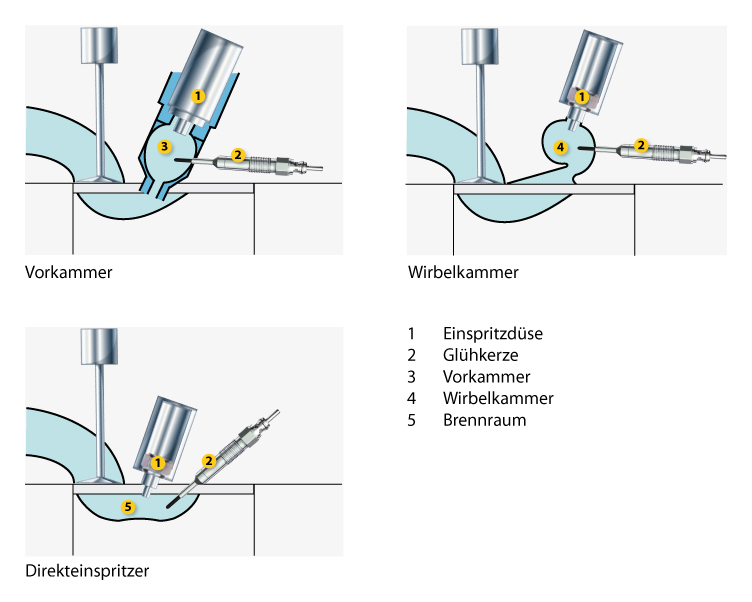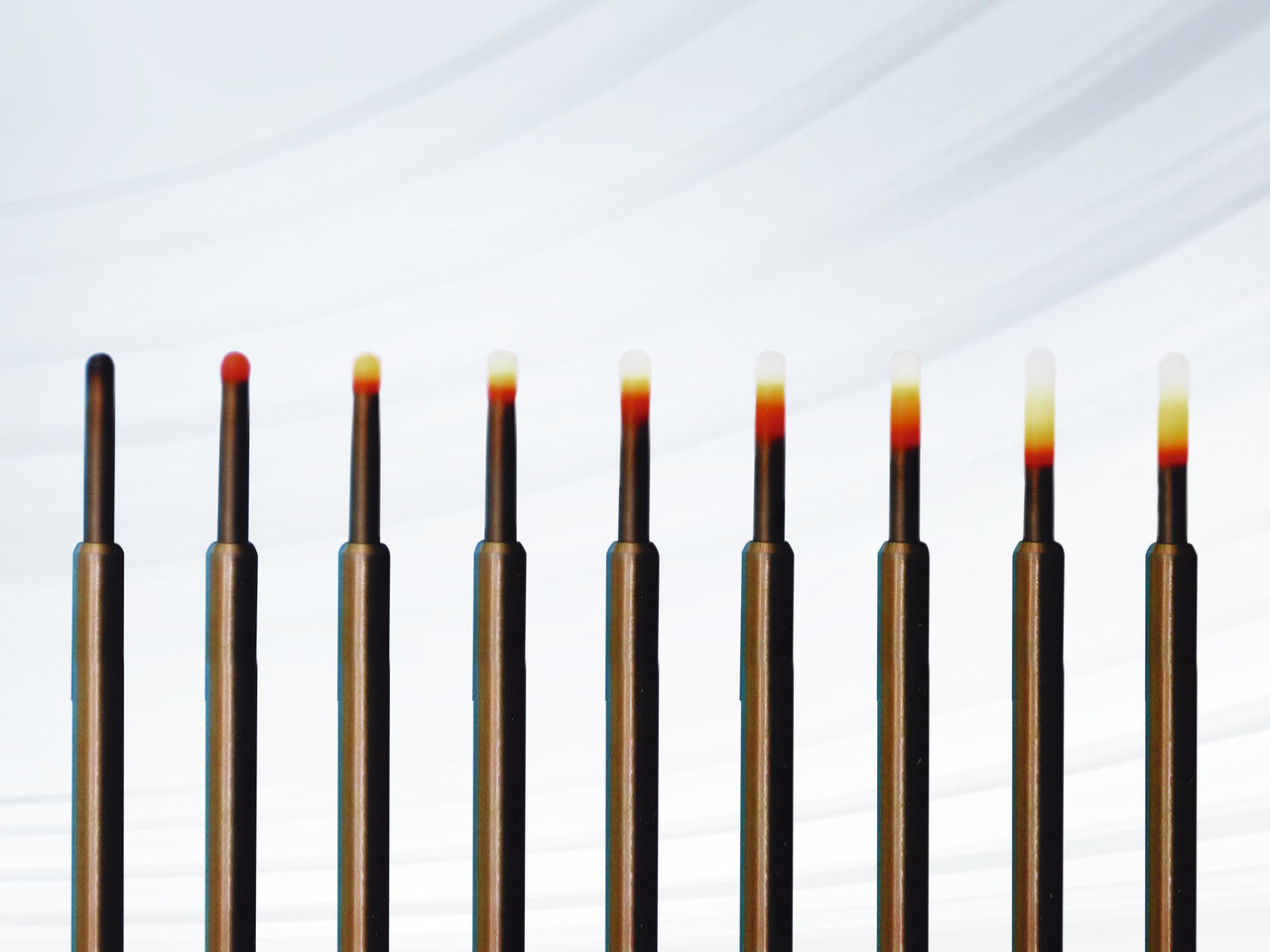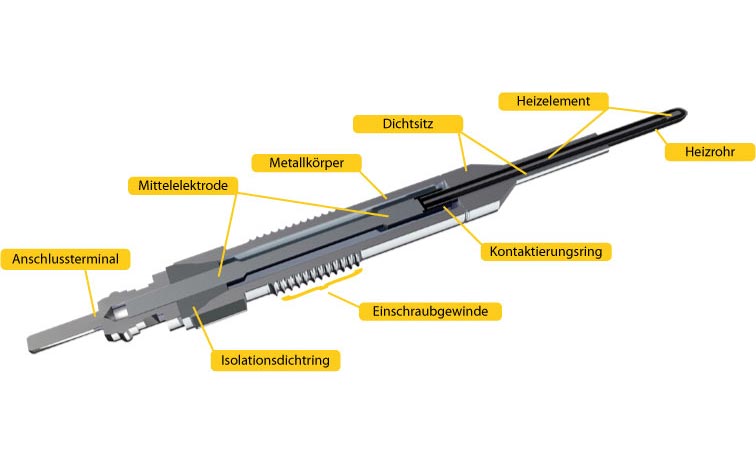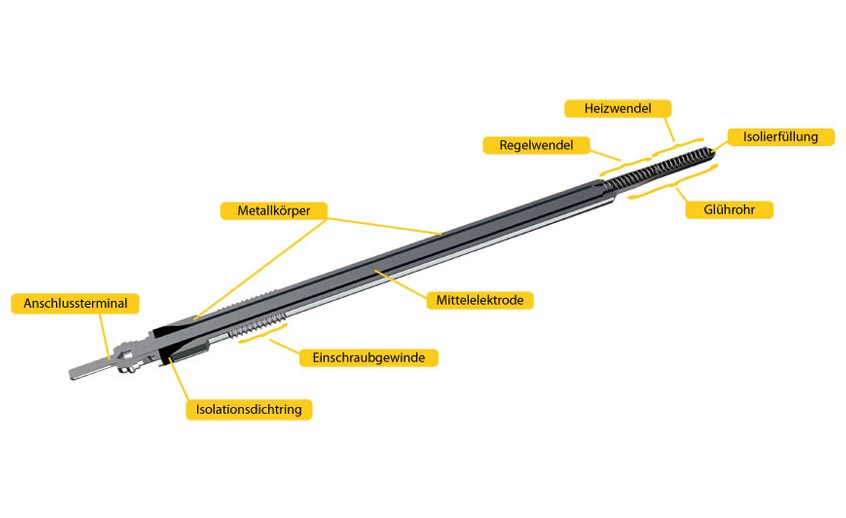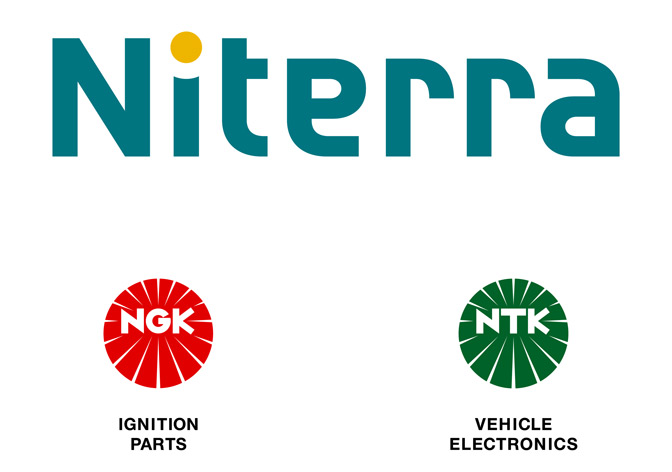Glow plug
Function Diesel engines are compression-ignition engines. In other words: The fuel injected does not require an ignition spark to ignite. The power stroke is triggered in three steps...
Environmental protection
Protection of the environment Close collaboration between manufacturers of glow plus and the automotive industry starts as early as the engine design stage. The result is environmentally-friendly diesel starting in two to five seconds, safe starting at temperatures as low as –30°C, smooth engine starting without exposing the engine to excess stress and strain and a reduction of up to 40% in soot emissions during the warm-up phase in the case of post-heating plugs. Reduction in white/blue smoke Until the ideal ignition temperature is reached, white or blue smoke puffs out of the exhaust. This smoke is attributable to incomplete fuel combustion as a result of the ignition temperature not being high enough. Post-heating ensures more complete and quieter combustion of diesel fuel during the warm-up phase. This reduces clouding of the exhaust gas by up to 40%.
Safety
Safety Annual breakdown figures collated by the ADAC provide an overview of the main causes of accidents involving vehicles on Germany's roads. More than 3.9 million cases were analysed. Electrics and the ignition system continue to top the list, accounting for more than half of all recorded breakdowns. On account of the continued rise in the number of electronic components and their networking via bus systems, electromagnetic compatibility (EMC) has gained significantly in importance in recent years. As a consequence, it is absolutely essential that:
- All electronic components and also the glow system are resistant to external influencing factors under all specific operating conditions.
- Electronic components and the glow system must not interfere with other electrical systems.
- Electronic components and the glow system must support error-free radio reception both inside the vehicle and in the immediate surroundings.
Depreciation
Depreciation Regular inspection of glow plugs helps to identify faulty glow plugs in good time so that they can be replaced. Consequential damage, difficulties starting and increased emissions of harmful substances are thus avoided. An engine can only reach operating temperature quickly with glow plugs that are in perfect working order. This protects the engine, makes for smoother running and prevents knocking. Fuel combustion is then more uniform and more complete.
Function
Function Diesel engines are compression-ignition engines. In other words: The fuel injected does not require an ignition spark to ignite. The power stroke is triggered in three steps:
- First, pure air is drawn in.
- The air drawn in is compressed to 30 to 55 bar, heating up to between 700 and 900°C as part of this process.
- Diesel fuel is injected into the combustion chamber. The high temperature of the compressed air triggers combustion ignition. The internal pressure rises sharply and power is deployed to the engine.
- a higher power-to-weight ratio,
- low power output per litre and
- poor acceleration.
 Unceasing development of the injection technology and glow plugs has succeeded in overcoming all of these disadvantages. Today, diesel as a drive source is considered to be of equivalent if not higher quality.
Unceasing development of the injection technology and glow plugs has succeeded in overcoming all of these disadvantages. Today, diesel as a drive source is considered to be of equivalent if not higher quality.
The function of glow plugs
The function of glow plugs in order for a diesel engine to reliably start at low outside temperatures and run with low noise and low emissions during the warm-up phase, glow plugs are fitted which protrude into the cylinder. The glow plugs must very quickly make a high temperature available to assist the ignition process, subsequently maintaining this temperature regardless of boundary conditions or even adapting it to suit them.
 During pre-heating, a high current initially flows via the connecting bolts and the regulator coil to the heater coil. The heater coil quickly heats up, causing the heater zone of the glow plug to glow. The glowing spreads rapidly. After between two and five seconds, the heater rod is glowing virtually right up to the plug body. This causes a further increase in the temperature of the regulator coil, which has already been heated by the current. As a result, the electrical resistance of the regulator coil rises and the current is reduced to a level that ensures that the glow rod is not at risk of damage. This prevents the glow plug from overheating. If the engine does not start, the glow plug is switched off by the glow time control unit after a certain stand-by time. Older style vehicles are usually fitted with glow plugs which only glow before and during the start phase.
During pre-heating, a high current initially flows via the connecting bolts and the regulator coil to the heater coil. The heater coil quickly heats up, causing the heater zone of the glow plug to glow. The glowing spreads rapidly. After between two and five seconds, the heater rod is glowing virtually right up to the plug body. This causes a further increase in the temperature of the regulator coil, which has already been heated by the current. As a result, the electrical resistance of the regulator coil rises and the current is reduced to a level that ensures that the glow rod is not at risk of damage. This prevents the glow plug from overheating. If the engine does not start, the glow plug is switched off by the glow time control unit after a certain stand-by time. Older style vehicles are usually fitted with glow plugs which only glow before and during the start phase.
Post-glowing glow plugs
Modern diesel passenger cars usually leave the production line with post-glowing glow plugs. This means that they glow:
- Before starting
- During the start phase
- After starting
- Whilst the engine is in operation (in coasting mode)
Quick start
With post-glowing glow plugs, it has been possible to reduce the glow time to between two and five seconds. To achieve this, design engineers have reduced the diameter of the heater rod at its front end. As a result, the heater rod starts to glow very quickly in this zone. At a temperature of 0°C, it takes just 2 seconds to achieve readiness for starting. At lower temperatures, glow time regulation enables the system to adapt to requirements and increase the glow time accordingly (at –5 °C to approximately 5 s and at –10 °C to around 7 s).
Protection against overheating
Self-regulating rod glow plugs protect themselves against overheating by limiting the current from the battery to the plug as the temperature increases. However, when the engine is running, the voltage increases to such a level that glow plugs which are not designed for the very latest technology can burn out. Furthermore, the energised plugs are exposed to high combustion temperatures following starting and are thus heated up from inside and out. Post-glowing rod glow plugs are able to function at full alternator voltage. Although their temperature rises quickly, a new regulator coil establishes a steady-state temperature which is lower than that of plugs which do not support post-heating.

